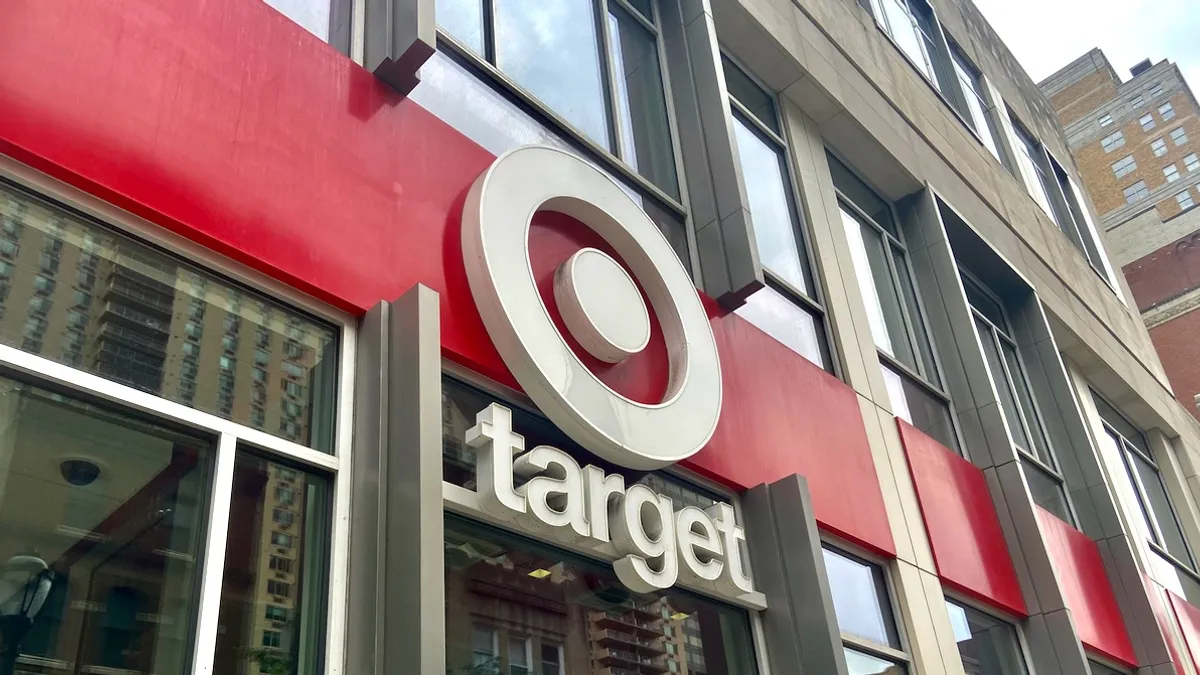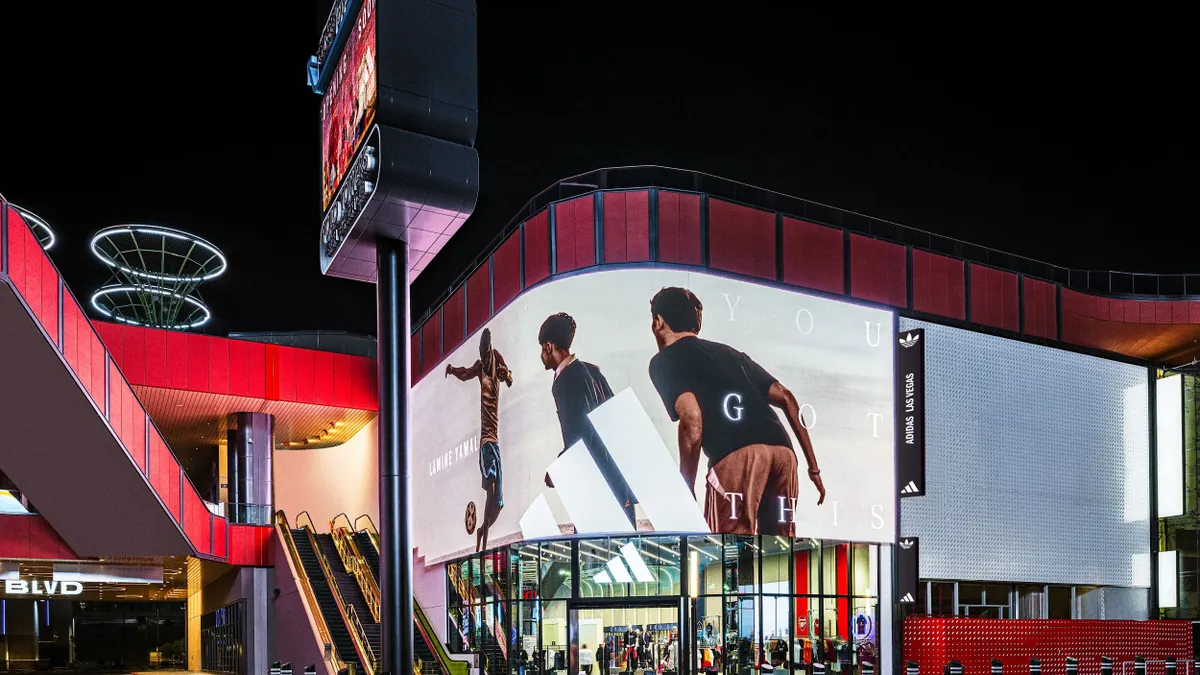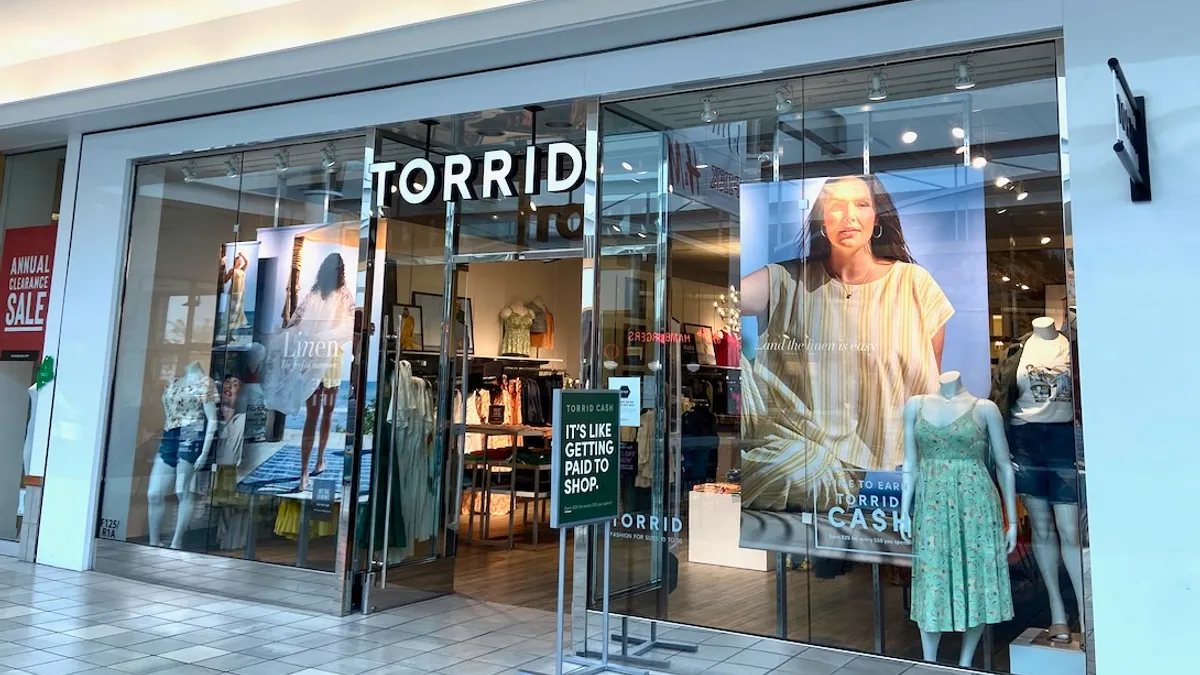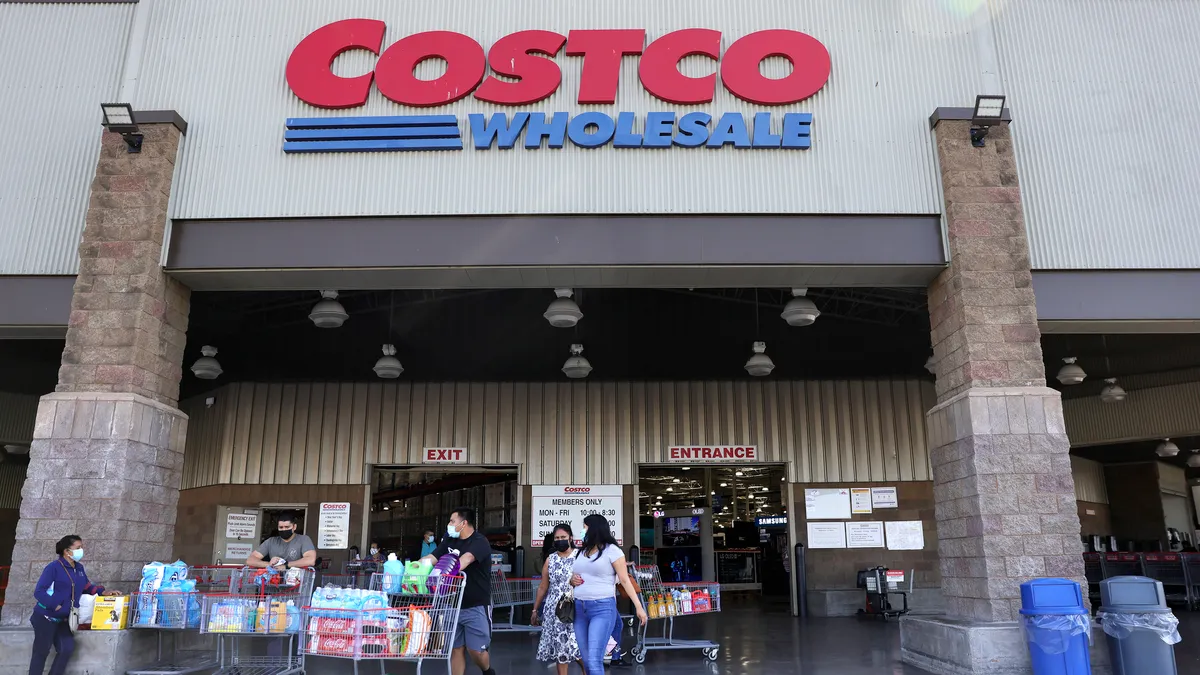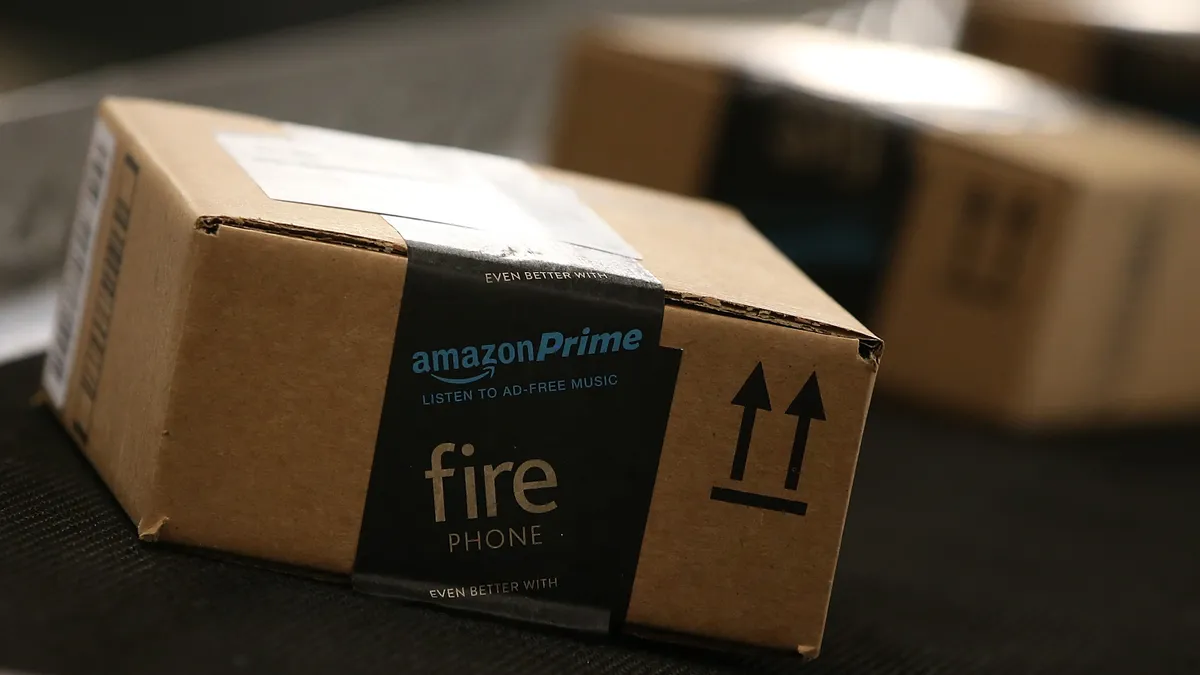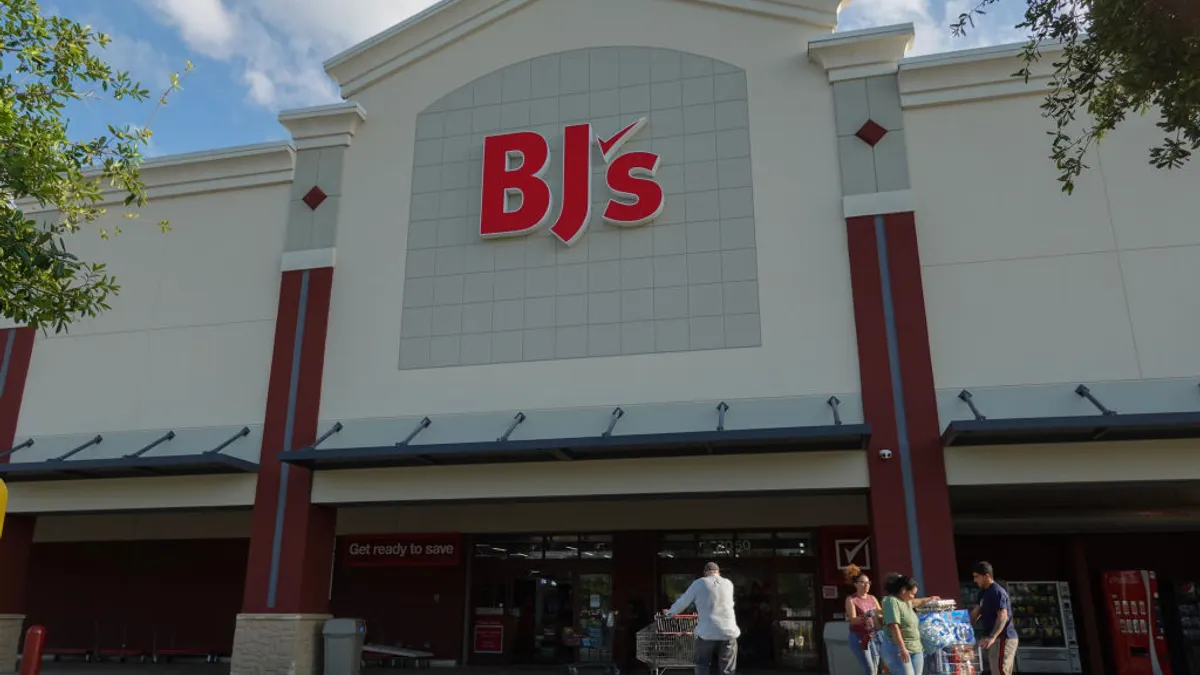It’s been a tough few months for Target.
Or at least that's how CEO Brian Cornell described it in an email to employees in early May. In the email, which Target shared with Retail Dive, Cornell recognized that silence from leadership had “created uncertainty,” but added reassurance that “we are still the Target you know and believe in—a company that welcomes all and aims to bring joy to everyone, every day.”
But is it? Some consumers aren’t so sure anymore and analysts would argue that Target’s tough period started far before this year.
Target is not standing still in the face of its challenges. The retailer announced a slew of new brands or offerings over the past few months, met with some well-known activists to discuss its DEI changes, launched a strategic refocusing initiative and switched up its executive team.
Still, analysts seem doubtful of how quickly the business can be turned around. Plus, the work comes at the same time as major changes in U.S. trade policy that have upended retail planning and inserted more uncertainty into the industry.
Target has a plan. But is it too little, too late?
A (recent) look back
The company has certainly earned its keep as one of the nation’s most successful retailers in the past few decades. In tough times, it thrived. Target in 2020 recorded $15 billion of sales growth, which was higher than its total sales growth over the previous 11 years, thanks in part to staying open for wary shoppers looking to consolidate purchases.
The retailer was thriving compared to others in apparel at the time, a category (along with home goods) where Target had invested heavily in private labels in the years prior. At the same time, Target was undergoing large-scale store revamps, investing in digital capabilities such as drive-up delivery and creating new shopping experiences like Ulta Beauty at Target.
From 2019 to 2020, Target saw its full-year sales increase nearly 20% year over year, along with a 19.8% increase in total revenue and a 40% jump in operating income. Cornell attributed much of this success to the company’s multicategory assortment mix and its various fulfillment options. For 2021, the retailer reported double-digit growth in all the same metrics.
By 2022, though, Target’s growth was slowing. And now, the company is facing not just sales declines, but also consumer backlash, a temporary pause on its Ulta shop-in-shops and a poorly positioned assortment for the current macroenvironment. Its Q1 earnings this month were a disappointment, and while that’s partly due to tariffs and consumer backlash, it’s also the result of longstanding issues.
In many ways, the very things that used to differentiate Target from other mass retailers like Walmart – its history of loud support for diversity and its dedication to nongrocery categories among them – are also what’s creating some of the friction it’s facing now. Yet it’s continuing to focus on such differentiation, including through a major merchandising revamp, to foster growth.
Do Target's differentiators still work?
Cornell echoes the importance of Target’s differences in the industry frequently. Between the 2021 and 2024 fiscal years, the executive used a version of the word “differentiator” in every full-year earnings press release, for a total of five times.
“We're not like other retailers, which is precisely what consumers have told us they value about Target,” the executive said in March. “We're the place they go to discover on-trend affordable products that they can't find anywhere else…We're the place they know will be a welcome break in their day, whether they're strolling the aisles or scrolling their feed.”
But are those differentiators still working? The company’s 2022 results saw total revenue up just 2.9%, whereas operating income declined a shocking 57%. Sales then declined in both 2023 and 2024, though operating income has since righted itself.
Its latest quarter shows 2025 is off to a similar start, with first-quarter merchandise sales dropping by about 3.1% to $23.4 billion, while comps fell 3.8%. Merchandise sales were down across all but one of the retailer's categories in Q1. The company expects a low-single-digit decline in sales for the year.
But it's important to first diagnose the problem with Target in order to identify the real solution, UBS analyst Michael Lasser said to executives on its Q1 earnings call this month.
“Other retailers have caught up and addressed some of the differentiation and qualities that have made Target unique,” Lasser theorized on the call. “And as Target has tried to catch up, its execution has become less consistent. And now to try and address these issues the focus is on improving execution. Is that right? And is that enough?”
As Target heads toward its third straight year of flat or negative comps, Walmart will have “grown by almost another Target over this same time frame (~$86b), magnifying the competitive pressures on Target,” Truist analysts led by Scot Ciccarelli said in a May 6 note shared with Retail Dive. “Overall, we think the company was already in a very challenging position before tariffs and now faces significant risk to what was already expected to be a soft ’25.”
Walmart has seemed less threatened by tariffs in comparison and in April said it nonetheless expects sales to grow 3% to 4% despite widespread changes to consumer spending in Q1. The mass retailer leads in grocery and has invested in expanding its other categories, namely its beauty and marketplace offerings.
Target’s recent challenges, and a contract for Cornell that goes up for renewal this year, could spell bigger changes for the retailer ahead.
Cornell has been CEO since 2014, stewarding the company through a changing economy, major shifts in the retail industry and the COVID-19 pandemic. In September 2022, the executive extended his contract with Target for three more years.
When asked about any plans for the CEO role, the retailer told Retail Dive that it doesn’t have anything to share on the topic. For now, Cornell remains at the helm – and one possible successor is leaving the business.
With its lackluster Q1 results, Target announced that Chief Strategy and Growth Officer Christina Hennington, who some analysts thought of as a potential replacement for Cornell, would depart the retailer over the coming months after a more than 20-year career at Target.
There are still some long-time Target executives at the company who could step up to the plate. Notably, COO Michael Fiddelke has been at the company since he was an intern in 2003 and was just tapped to lead Target’s new Enterprise Acceleration Office.
Back to the bullseye
Whether or not top leadership changes, Target knows something must. Cornell acknowledged on a Q1 earnings call that commitment to retail fundamentals such as reliable inventory, a new merchandise assortment and digital investment is key for the company’s strategy going ahead.
Target has indeed been focused on product newness for customers as of late, all part of a multiyear revamp announced in March. The overhaul includes a renewed focus on the retailer’s private label brands, the expansion of brand partnerships and “updates and expansions” to tech solutions to reduce out-of-stocks.
In addition, Target is opening up some shop-in-shops with DTC eyewear brand Warby Parker. And over the past few months, the mass retailer has launched an exclusive line with home textiles company Parachute, added 2,000 products to its baby assortment, launched a campaign to highlight spring merchandise and more.
This is on top of the retailer’s relaunch of private labels Up&Up and Auden last year, as well as the debut of new private brands such as the fresh flowers label, Good Little Garden, this April.
One benefit to Target’s private-label focus is that it protects the retailer slightly from tariffs, Telsey Advisory Group’s Assistant Director of Research and retail analyst Joe Feldman told Retail Dive.
“Private label is higher margin on average just across retail,” Feldman said. “So in this environment that gives them a little more cushion to take some of that margin pressure and not pass it through on the price side … I think the combination of differentiation relative to other retailers and a little bit of cushion there does help.”
But that is only so helpful, especially considering Target’s bent toward discretionary goods.
Small-ticket discretionary retailers working with fairly low margins, such as Target and Bed Bath & Beyond, are likely to experience the most severe earnings pressure from tariffs, Morgan Stanley analysts said in an April 16 note shared with Retail Dive. Tariff rates — which seem to be in a constant state of change — have been updated multiple times since then. The rate on many imported Chinese goods was at 145% for a few weeks, but is currently at 30% as of press time.
“This group is characterized by high exposure to China-sourced merchandise, low operating margins, and limited ability to increase prices without depressing demand, or to undertake a substantial reduction in SG&A expenses,” the Morgan Stanley analysts added.
Grocery, on the other hand, has a largely domestic supply chain. That benefits Target’s competitors, who have a higher share of grocery products. Target remains distinct from competitors largely for its offerings in the beauty, home and clothing categories.
Discretionary goods also have higher prices – and in today’s environment, affordability matters.
“We continue to make sure we're providing the affordability and value they're looking for,” Cornell added during a March earnings call.
Affordability might look different in this environment for some of the company’s products, though.
A post this month on the Target Reddit forum, which often features discussion from store employees, flagged that the price for a black iPhone 15 Pro phone case from Dealworthy (Target’s private label discount brand) went up from $5.99 to $9.99, which is confirmed by screenshots of the archived site.
Nevertheless, Cornell seemed upbeat on the retailer’s March earnings call about its potential to mitigate the impact. “We've been here before. We've managed through tariffs in the past.”
But the United States hasn’t ever been quite where it is right now in terms of tariff policy with major global partners, whom the U.S. economy has increasingly become reliant on over the decades. And Target isn’t just facing tariffs.
The backlash to the backlash
Among the retailer’s main challenges right now is consumer backlash to a shift in its corporate DEI initiatives announced in January. The changes included a decision to no longer participate in third-party diversity surveys and a renaming of its “supplier diversity” team to “supplier engagement.” The move was announced a few days after the inauguration of President Trump into his second term.
But to fully understand the importance of the current predicament, a look back at 2023 is required.
Target had become well-known for its Pride Month merchandise and displays, starting off the celebrations that year with bold and vivid in-store signage. Those efforts were pulled back after angry customers destroyed the displays and confronted store workers. A boycott was encouraged on social media by vocal conservatives and some members of Congress.
But Target’s capitulation had unintended consequences, as LGBTQ+ advocacy groups called for the retailer to make a public statement about the changes and reaffirm its commitment to the community.
All of this happened against the backdrop of declining sales and share value at Anheuser-Busch after a brief tie-up between the Bud Light brand and a transgender influencer incited some boycotts.
Target’s news this January may have stoked the flames of existing consumer dissatisfaction that it started back in 2023.
“I think they pissed off one side of the political spectrum, they acknowledged that and then pissed off the other side that they were supposedly defending in the first place,” Feldman said . “And they also showed that they could get pushed around rather than just say, ‘This is who we are and deal with it.’”
The company is now facing boycotts once again, from a socially left-leaning customer base. And it’s hurting the retailer’s financial results.
The changes Target announced on this front in January impacted its Q1 results, according to Cornell, though he said it’s hard to quantify the exact impact of any individual headwind it is facing right now.
Cornell even met with Rev. Al Sharpton in April, as his activist group, National Action Network, considered a boycott.
“We are absolutely dedicated to fostering inclusivity for everyone – our team members, our guests and our supply partners,” a Target spokesperson told Retail Dive when asked about the current consumer backlash and the company’s meeting with Sharpton. “To do that, we’re focusing on what we do best: providing the best retail experience for the more than 2,000 communities we’re proud to serve.”
A look at Target’s social media posts reveals that at least some consumers remain unhappy with the DEI changes made months ago. An Instagram post from the retailer about its Mother’s Day offerings features public comments saying “haven’t been to Target since last year” and “stopped shopping at Target a few months ago”.
While Target’s customer base skews a little more to the left side of the political spectrum, Feldman added, competitors like Walmart may skew more to the right, which may be why that company hasn’t experienced as much backlash for its own DEI changes in 2024.
Overall, the retailer is not in an enviable position, according to Alison Taylor, professor at New York University’s Stern School of Business and author of “Higher Ground: How Business Can Do the Right Thing in a Turbulent World.” The retailer is likely serving as a target for activists looking to make changes across the broader retail industry, despite the changes to its DEI initiatives being more nuanced than headlines suggest, Taylor said.
“In retrospect, I can see a case that they should have stuck to their guns from a brand point of view … but it’s very easy to say that with the benefit of hindsight,” Taylor told Retail Dive. “I would like to think we’re moving to an era where what [a retailer does] will be really more important than what [it] says.”
The same can be said for what the retailer does beyond its DEI initiatives. Analysts will have a watchful eye on the actions Target takes to reorient the business this year, filtering out the corporate buzzwords and examining its retail fundamentals.


